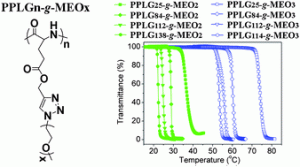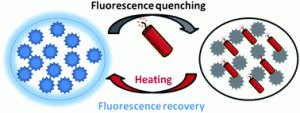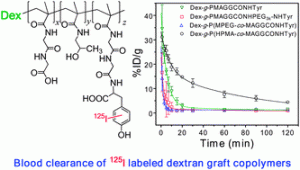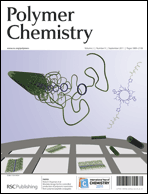 A series of thermoresponsive polymers suitable for releasing drugs from polymer nanoparticles have been created by a team at Changchun Institute of Applied Chemistry, China.
A series of thermoresponsive polymers suitable for releasing drugs from polymer nanoparticles have been created by a team at Changchun Institute of Applied Chemistry, China.
The team synthesised a series of thermoresponsive oligo(ethylene glycol)-grafted polypeptides that can self-assemble into amphiphilic nanoparticles in aqueous solution. These polymers show sharp temperature-dependent phase transitions and the lower critical solution temperature can be adjusted from 22.3 to 74.1 °C by varying the molecular weight, the length of the OEG side chain, the polymer concentration and salt concentration. The polymer nanoparticles are not toxic and the team demonstrated their drug release profiles using doxorubicin as a model drug.
To keep up-to-date with all the latest research, sign up for the journal’s e-alerts or RSS feeds or follow Polymer Chemistry on Twitter or Facebook.



















